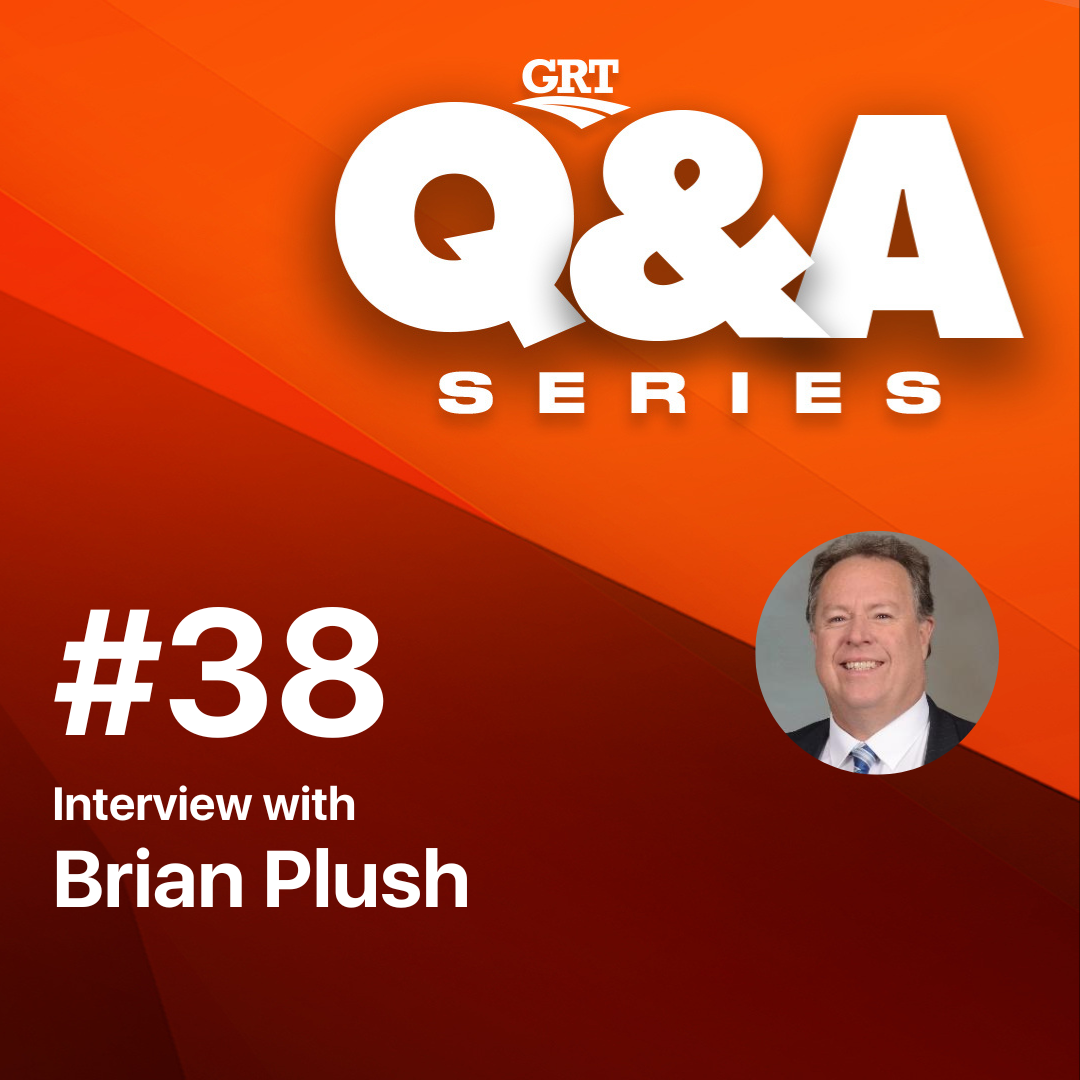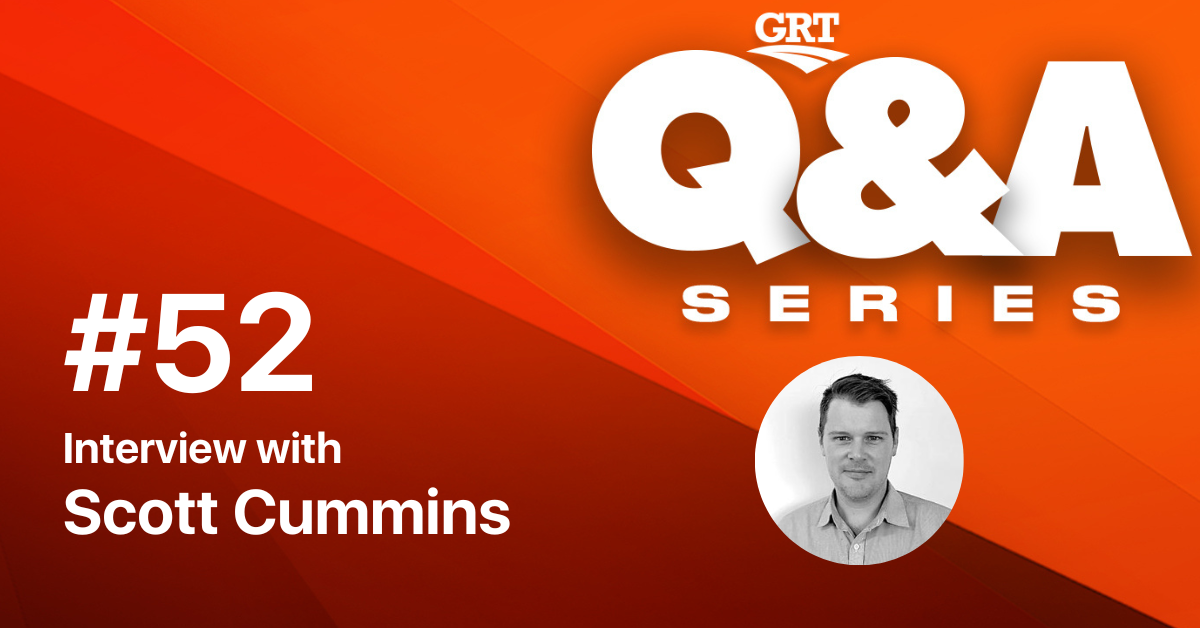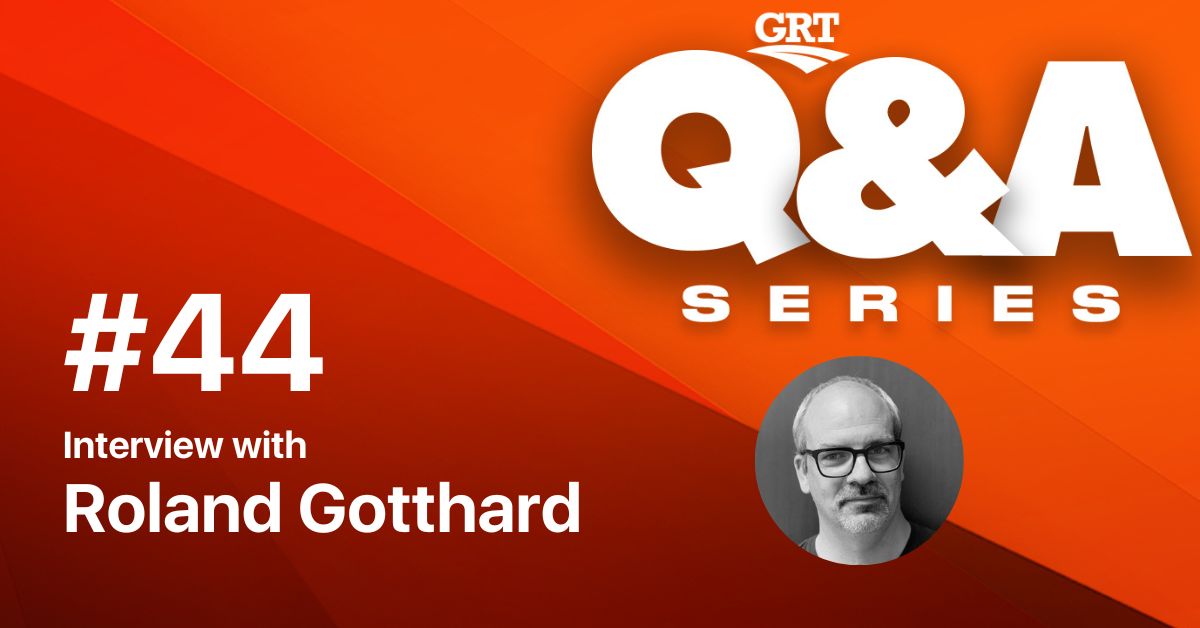Q&A series #38 : Interview with Dr Brian Plush

About the guest
Brian is a particulate matter scientist specialising in quantifying respirable (<2.5-micron size) dust production at the source of generation and implementing strategies to mitigate the respirable dust before it becomes airborne and enters the working environment and creating significant and potentially fatal health risks for workers. Brian is a registered inventor and holds multiple patents in Australia, the USA, China, Russia, Turkey, Kazakhstan, Europe and Eurasia for dust mitigation equipment and engineering control efficiency testing models and procedures. Brian has been in the hard rock and coal mining industries for over 35 years with extensive underground practical experience as a miner on the face, mining contractor, project manager and engineering consultant. Additional to a PHD in Mining Engineering, Brian holds a Master’s Degree in Commercial Law with expertise in Environmental Law and the WHS Act (2012). Brian is also a trade qualified Mechanical Fitter. Brian has undertaken projects to mitigate respirable dust with NSW EPA, Doctors for the Environment, Vale, Peabody, Adani Abbot Point Coal Terminal, BMA, Anglo America, Centennial Coal, BHP, Whitehaven Coal, Komatsu, Caterpillar, Jincheng Anthracite Mining Group in China, China University of Mining Technology, Kazakhstan University of Technology, and the University of Melbourne Lung and Therapeutic Centre. Many of these projects are ongoing. Brian has also featured extensively in the Federal Senate Inquiry into Black Lung, Chaired by Senator Doug Cameron in 2015 and more recently the Qld CWP Select Committee Inquiry Chaired by Joanne Miller, where many of their recommendations by Brian were included in the final report to the Parliament.
Topic of discussion: Silica dust from the lenses of a particulate matter scientist.
Respirable silica dust is generated from different activities performed in industries such as mining, quarrying, construction, demolition, stone masonry amongst many others.
PM 10 Laboratories takes a scientific approach to particulate matter such as silica dust and are experts in particulate matter management to minimize the risk of occupational lung diseases such as silicosis, coal workers pneumoconiosis and lung cancer.
They perform respirable dust control efficiency measurement and dust sampling, diesel particulate testing and recommend technology supply to mitigate particulate matter.
Their approach is based on taking a smart way to understand airborne contaminants. For instance, the behaviour of respirable dust production during the cutting cycle in underground and open cut coal mines and underground and open pit hard rock mines.
In this GRT Q&A Series, we spoke to Dr Brian Plush, the Managing Director of PM 10 Laboratories. Our conversation revolved around silica dust from the lenses of a particulate matter scientist. He is based in the Greater Sydney Area in Australia.
Q1) Welcome to the GRT Q&A Series, Dr Plush. It’s an honor and pleasure to have you with us. Can you please tell us about who Brian Plush is and what your role as a Particulate Matter Scientist at PM10 Laboratories entails?
Thank you for the invitation to discuss and unpack my passion for respirable and silica dust mitigation.
Respirable silica dust control, as you rightly point out, is a complex science. Engineering controls for respirable and Silica dust mitigation are the most frequently utilised method for minimising risk of exposure to workers. However, the efficiency of the installed control is never measured to quantify if the control is actually working. Exposure level monitoring is for personal sampling only and does not identify the risk potential of lung disease to the worker. Simply being in compliance does not protect a worker from lung disease. Removing the hazard to as low as reasonably achievable significantly lowers the risk of lung disease. Installed engineering controls MUST be tested to quantify how much hazardous dust they actually remove. Otherwise, why have them?
I provide a scientifically valid method and process to QUANTIFY the EFFICIENCY of installed engineering controls to mitigate respirable and silica dust.
Q2) Getting deeper into your trade, you are actually a Silica and Respirable Dust Mitigation Scientist! Care to share more about the specifics, experiences and scenarios you have actively been involved in?
Respirable and silica dust lung diseases are not new. They have been around for 100’s of years. During research 15 years ago, it became very clear that our modern understanding of particle behaviour has not progressed. We still consider water and sprays to be the most effective dust control, but we fail to develop processes to quantify if the water or spray work. We fail to measure the efficiency of dust controls, generally accepting that because we can’t see the dust, or we are in compliance, then everything is Ok. I have undertaken projects that have proven that removing an installed control is the most effective way to lower exposure levels. This occurred in an underground coal mine where a continuous miner (coal cutting machine) was cutting a stone face (lots of silica) and produced significant amounts of airborne silica dust, resulting in exceedances to legislated levels. By testing the installed controls, we found that curtains installed on front of the continuous miner, prevented ventilation from reaching the face and caused the produced dust to migrate back over the miners. By removing the curtains, the ventilation was allowed to push the produced dust back to the face, where extraction ventilation could remove it. By removing the curtains, we effectively removed 98% of the silica dust from the working environment.
Q3) Particle size matters and what you don’t see probably does the most damage. Please educate us about the effects of different respirable silica dust particle sizes on the lungs? What is the aftermath of breathing in silica dust particles?
We know that particles less then 2.5 micron in size (respirable size particles) can penetrate much further in to the lungs than larger particles, eventually lodging in the Alveoli, or gas exchange region of our lungs. Our lungs do not have the capacity to remove these particles. Further, particles less than 40 microns are generally invisible to the naked eye. For size comparison, a human hair is approximately 70 micron in diameter. Breathing silica dust, which is typically less than 1 micron in size, can cause silicosis, which in severe cases can be disabling, or even fatal. When silica dust enters the lungs, it causes the formation of scar tissue (Interstitial Fibrosis) in the Alveoli, which makes it difficult for the gas exchange to occur, resulting in shortness of breath, fatigue, chest pain, respiratory failure and death. The symptoms intensify as the disease progresses. It was previously understood that silicosis typically occurs after 15–20 years of occupational exposure to the silica, however, it has recently come to light that individuals exposed to very high concentrations of silica during dust producing tasks, can develop typical silicosis symptoms as well as fever and weight loss within weeks instead of years.
It must be understood that particle SIZE creates interstitial fibrosis, and particle TYPE and SHAPE dictate disease progression.
Q4) We are in an era of real time particulate monitoring. How can the technological advancements in real time silica dust monitoring improve the current status quo of silica dust related diseases such as silicosis?
Real time monitoring can be an effective tool to create awareness of when an exceedance to statutory compliance levels has occurred. The limitations with this technology, however, is that is gives no detail on how the exceedance occurred, where it has originated from, nor what task or process was being undertaken at the time of the exceedance. Until real time monitoring can be advanced enough to identify individual sources of dust generation and measure changes in engineering control efficiencies, we will struggle to slow down the growing cases of silicosis and other occupational lung diseases.
Q5) What challenges have you faced as silica and respirable dust mitigation scientist? Where are the cross-roads between science and policy? Is there synergy or perhaps more needs to be done?
he primary challenge revolves around the fact that the silica, and other particles that create lung disease, are invisible. In many instance, an engineering control may remove the visible dust, but does nothing to remove the invisible dust, and is therefore considered as effective. Therefore, many companies and organisations consider that existing controls (“we have always done it like this”) are adequate to prevent lung disease, however, the growing number of cases globally, shows this to be incorrect. Another challenge is that current exposure levels are deemed as a line in the sand. That is, if a company is in compliance, their workers are safe. We do not know how many particles it takes to create interstitial fibrosis. We do not know if short term exposure levels (STEL’s) are more or less dangerous than long term exposure. Therefore, the only reasonable approach to respirable and silica dust mitigation to protect all workers and communities, is to ensure that produced harmful particles are reduced to as low as reasonably achievable (ALARA). Finally, science needs to underpin policy to allow the creation of data driven decisions for respirable and silica dust mitigation. The subjectivity in exposure level MONITORING needs to work in parallel with the OBJECTIVITY of empirical task testing.
Q6) Respirable and silica dust control is a complex science! Please dissect this statement from the past, present and future of silica dust control. Is quantification of dust removed missing in the conversations?
As mentioned above, controlling silicosis and other occupational lung dust diseases, is a complex science. The health risks associated with exposure to silica dust are well documented. Also mentioned previously, silicosis is not a new disease. The impact of silica dust on the respiratory function was observed as far back as 430 B.C. by Hippocrates. Additionally, by Agricol in the 16th century. Dr. Bernardino Ramazzini, in 1700, identified evidence of silicosis in stone masons. Further, in the early 1900’s, Dr Alice Hamilton documented silica related illnesses among granite workers. In Australia, Black Lung disease, (Pneumoconiosis), was considered eradicated in the mid 1980’s, although no evidence can be identified as to how this was achieved. Unfortunately, in 2015, black lung was correctly identified in coal workers in Queensland, and has been growing significantly. This would indicate that a significant gap exists between what regulators and industry thought was happening with respirable and silica dust control and what was actually happening. To this end, simply lowering an exposure level, and increasing monitoring frequency may not provide the desired effect of mitigating the risk of occupational lung disease. As engineering controls are the highest order control on the Hierarchy of Controls, it makes sense to ensure these controls are efficient in removing as much respirable and silica dust as possible. The only way to confidently lower the risk of respirable and silica dust disease, is to remove the hazard from the source of generation, preventing it becoming airborne. Therefore, quantifying the efficiency of engineering controls is critical.
Q7) In closing, let us tackle the ‘big elephant in the room’ Is enough being done to save lives from silica dust exposure? Are we fighting a losing battle?
Change always takes time. To solve a problem we first need to completely understand that problem. Also, if we can’t measure it, we can’t fix it. Simply doing the same thing, the same way, and expecting a different outcome is not a valid strategy. We need to establish baseline respirable and silica dust production at individual sources of generation as an empirical number. This means we need to measure respirable and silica dust loads and apply an empirical denominator to the dust load, which will provide a repeatable measurement. The dust load can be remeasured with installed controls operating. The resulting difference will be the efficiency of the installed control. These results then need to be applied to an Efficiency Rating where 10 is Most Efficient and 1 is Not Efficient at all. This information will allow end users to determine which control they will use to mitigate their dust production and provide Regulators with information and processes that will lower the risk of occupational lung disease to comply with WHS Legislation.

Keith Nare
Technical Head of Communications for GRT, Keith leads GRT's content strategy across various platforms, whilst coordinating internally to build the voice and opinions of the GRT team. Keith is a product of Nelson Mandela University and his PhD work focuses on Polymer and Physical Chemistry. He was a Research Associate at SANRAL in South Africa and later spent time as a Visiting Research Associate to NTEC at the University of Nottingham in the UK. He is a former Director of Communications for CALROBO in the USA.
Keith is passionate and enthusiastic about health and safety, sustainability, networking and finding synergy through conversations.
Related Interviews
MORE INDUSTRY ARTICLES
Nothing found.









